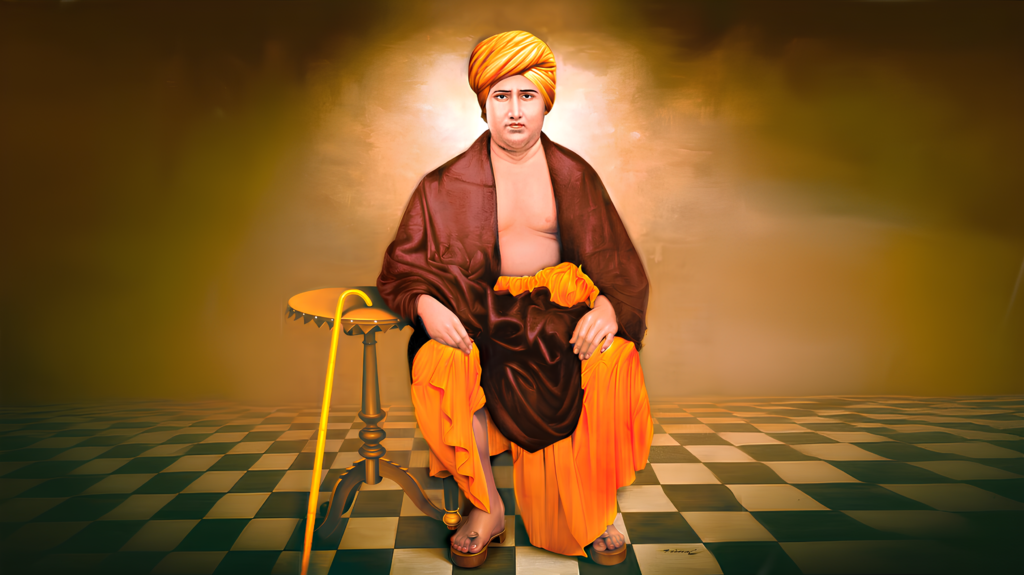Was Swami Vivekananda Opposed to Adi Shankaracharya? Understanding Vivekananda’s Neo-Vedanta

- Was Swami Vivekananda Opposed to Adi Shankaracharya? Understanding Vivekananda’s Neo-Vedanta
- Introduction: Who Were These Great Thinkers?
- Shankaracharya’s Vedanta: Advaita Vedanta Explained
- Vivekananda’s Neo-Vedanta: A New Twist
- How Were They Different? : Key Differences Between Advaita Vedanta and Neo-Vedanta
- Key Differences Between Advaita Vedanta and Neo-Vedanta
- What Can We Learn from Their Teachings?
- Conclusion: Different Ways, Same Goal
- Recommended Video
Namaste Shiksharthis! Imagine if someone told you two of the greatest thinkers from India, Swami Vivekananda and Adi Shankaracharya, disagreed with each other! Some people thought Swami Vivekananda was against the teachings of Shankaracharya, but was that really true? In this story, we will look at how both of these wise men believed in Vedanta but in slightly different ways. Let’s understand what happened and why!
Introduction: Who Were These Great Thinkers?
A long time ago, in 1893, a wise man named Swami Vivekananda went to Chicago, in the United States, to speak about India’s spiritual beliefs. His speech made people from all over the world start to see India as a land of wisdom. However, while many admired his ideas, some began to claim that he was rejecting the teachings of another famous philosopher, Adi Shankaracharya, who had lived much earlier. This led to a lot of confusion. Was Swami Vivekananda really opposed to Adi Shankaracharya’s philosophy?
Shankaracharya’s Vedanta: Advaita Vedanta Explained
Adi Shankaracharya believed in something called “Advaita Vedanta.” Now, don’t worry if this sounds like a big word! It simply means “non-duality” or “no separation.” According to Shankaracharya, everything in the universe is connected. He taught that our true self (which he called Atman) and the ultimate reality (called Brahman) are the same.
In simple words, he said that deep down, all of us are made of the same thing. It’s like saying, “All rivers are made of water, and in the end, they all flow into the ocean.”
He also believed that the world we see—trees, buildings, people—isn’t the whole story. It’s like when you watch a movie; the movie seems real while it’s playing, but when it ends, you realize it was just a movie! He called this world “Maya” or an illusion.
However, there is more to Advaita philosophy. Many philosophers, apart from Adi Shankaracharya, have contributed beautifully to its development. One such branch is Advaita Kashmiri Shaivism. Click here if you want to learn more.
Vivekananda’s Neo-Vedanta: A New Twist
Swami Vivekananda really liked Shankaracharya’s teachings. But Vivekananda lived in a different time—a time when India was under British rule, and many people were struggling with poverty. So, while he admired Shankaracharya’s ideas, he thought they needed a new twist to help people during his time.
Vivekananda came up with something called “Neo-Vedanta.” In his version, he agreed that the ultimate truth is the same as Shankaracharya’s philosophy, but he felt the world we live in is not just an illusion. Instead, Vivekananda said the world is relatively real and that we must help people who are suffering.
How Were They Different? : Key Differences Between Advaita Vedanta and Neo-Vedanta
Let’s look at how Adi Shankaracharya’s and Swami Vivekananda’s ideas were different:
Shankaracharya believed that the world is an illusion (Maya) and that the ultimate goal is to realize that we are all part of one universal reality.
Vivekananda said that while the ultimate truth is the same, the world we live in has some reality. He believed we should help others by doing good deeds and making the world a better place before we focus on higher spiritual goals.
Shankaracharya thought that knowledge (Jnana) was the only way to find freedom or moksha. Vivekananda, on the other hand, taught that knowledge, selfless action (Karma), and devotion (Bhakti) together could lead to true freedom.
Key Differences Between Advaita Vedanta and Neo-Vedanta
One of the main distinctions between Advaita and Neo-Vedanta lies in their treatment of the material world. Shankaracharya taught that the world is Maya—an illusion that distracts us from realizing our true nature. On the other hand, Vivekananda viewed the world as relatively real. He believed that the world, though impermanent, provides a platform for selfless action and service, which are integral to spiritual growth. Furthermore, while Shankaracharya prioritized the path of knowledge, Vivekananda advocated for the combination of knowledge, action, and devotion. He believed that liberation could be achieved through a balanced approach of Jnana (knowledge), Karma (selfless action), and Bhakti (devotion), a concept he termed “Jnana-Karma-Yoga.”
What Can We Learn from Their Teachings?
There’s a lot we can learn from both Adi Shankaracharya and Swami Vivekananda. Even though their teachings were slightly different, they both believed in the power of Vedanta to help people understand the meaning of life.
Shankaracharya helped people understand that we are all connected to the same ultimate truth, which he called Brahman. Vivekananda, on the other hand, showed us that spirituality can also be practical. He taught that by helping others and working hard, we can make the world better for everyone.
One of the most important things Vivekananda taught was that spirituality isn’t just for people who are well-off or comfortable. Everyone, even those who are struggling, should have the chance to grow spiritually.
Conclusion: Different Ways, Same Goal
So, was Swami Vivekananda opposed to Adi Shankaracharya? Not really! Vivekananda respected Shankaracharya’s teachings but realized that during his time, people needed something more practical to help them survive and thrive.
In the end, both thinkers wanted the same thing: to help people realize the truth about life and find freedom. While Shankaracharya focused more on deep knowledge and meditation, Vivekananda combined this with helping others and making the world a better place.
By understanding both philosophies, we can see how spirituality can be both a personal journey and a way to make the world a kinder, more compassionate place.



shuklahiranya@gmail.com